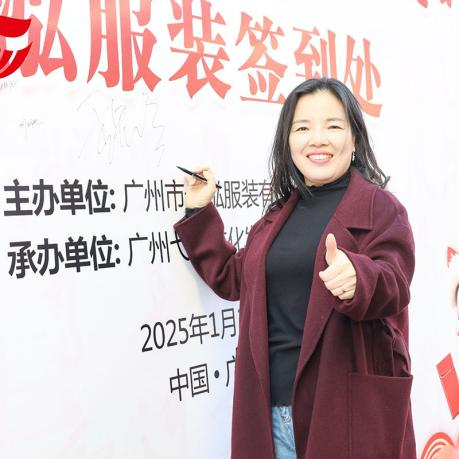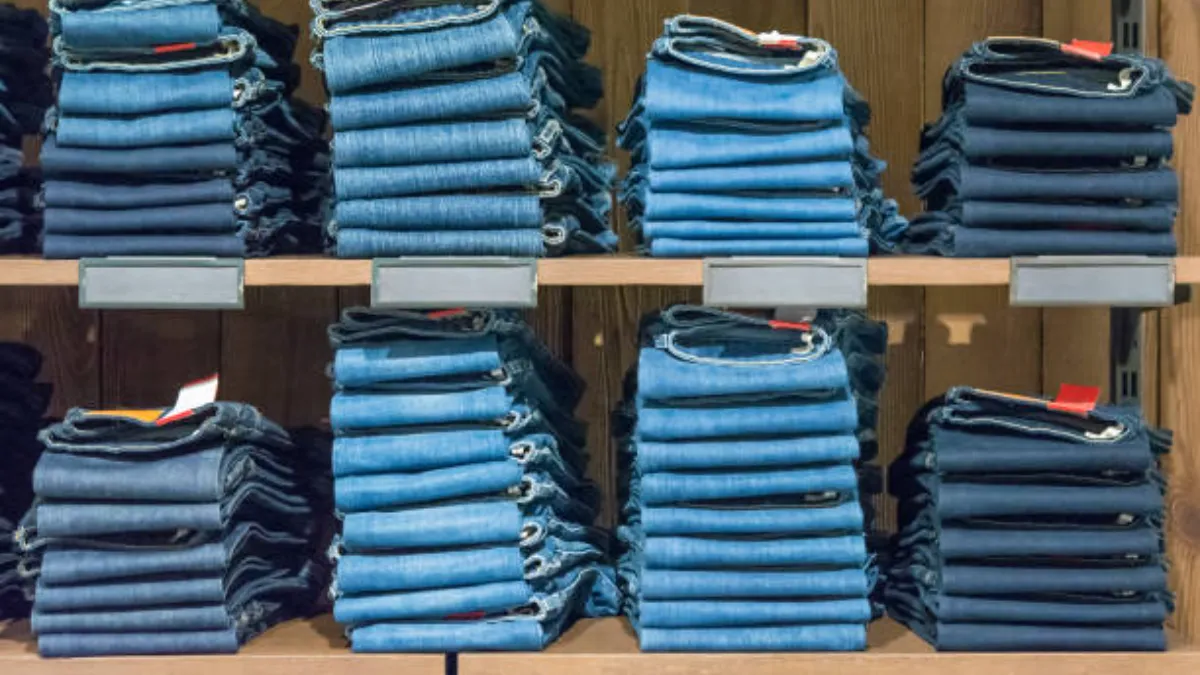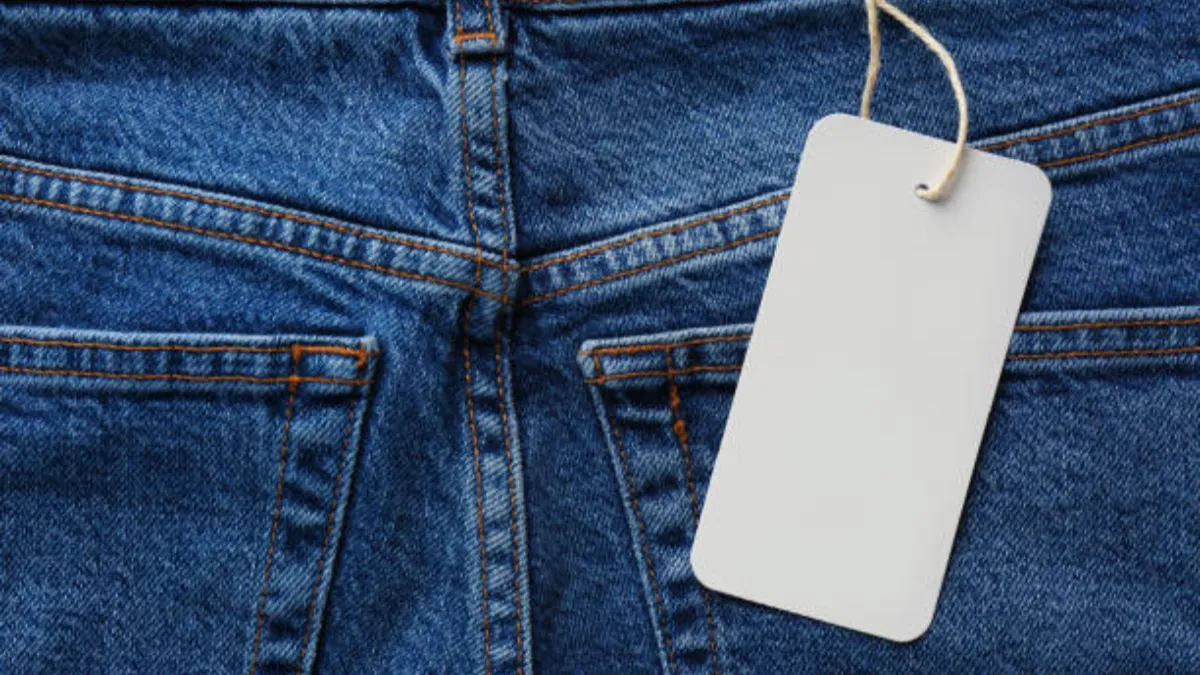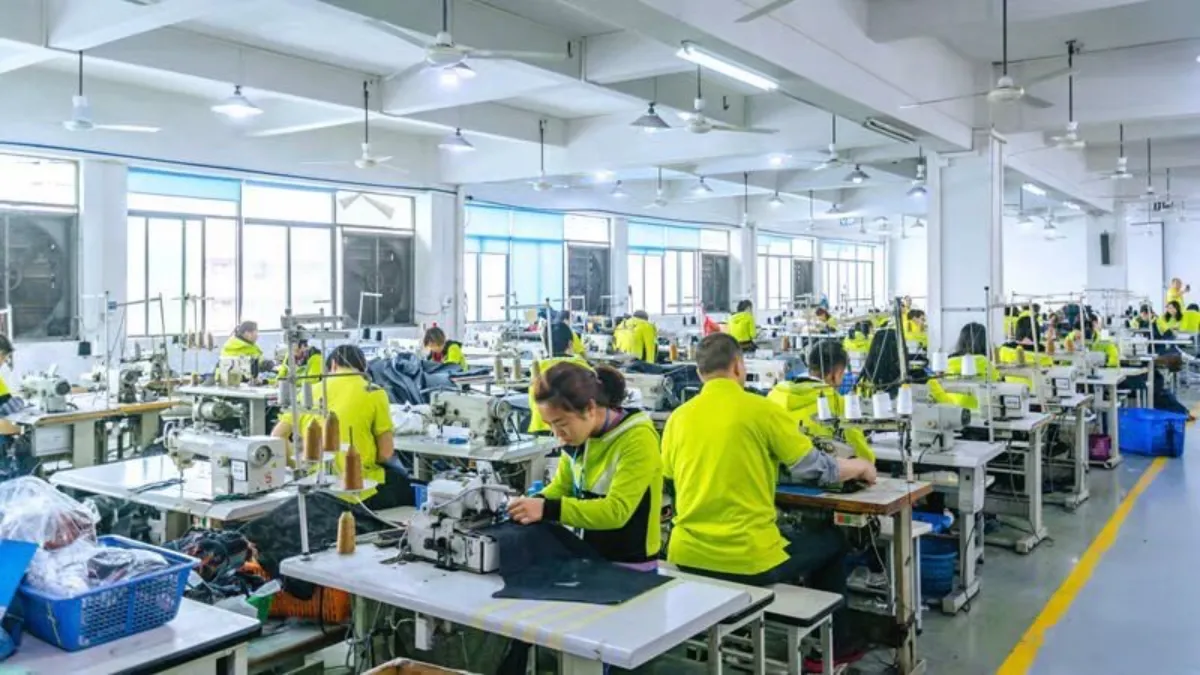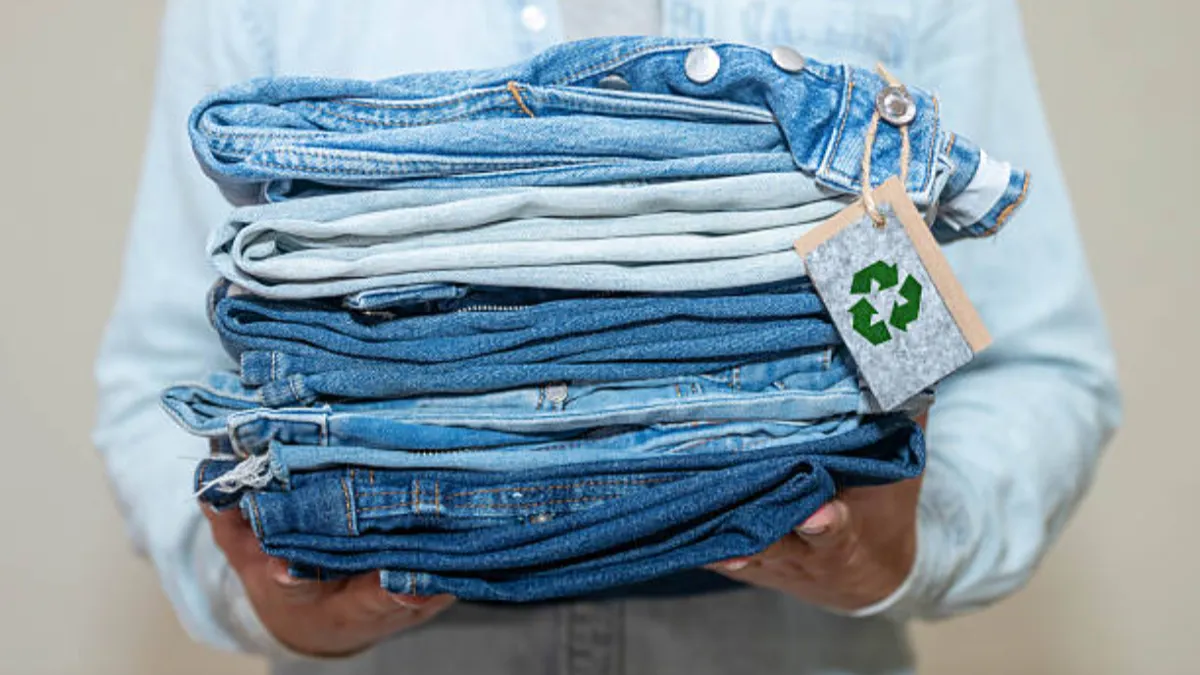OEM and ODM denim brands rely on a clear production flow to keep fit, 품질, and delivery on track. This guide walks through the main steps of making jeans, from fabric sourcing and dyeing to weaving, 재봉, and washing. Each stage plays a direct role in cost, stability, and lead time, helping buyers plan orders with confidence and work smoothly with the factory throughout the season.
Overview of Denim Jeans Manufacturing
| Process Stage | Role in Manufacturing | Expert Insight |
|---|---|---|
| Key Stages in Denim Production | Begins with sourcing high-grade cotton, spinning yarns, indigo dyeing, and weaving the fabric, then continues through finishing, precision cutting, 재봉, 세탁, 괴로운, and final inspection. | Full traceability ensures bulk runs match approved samples; once controls loosen, shade mismatches can cascade across large orders. |
| Importance of Controlled Workflow | Monitors shade uniformity, 인장강도, and garment fit while integrating CAD layouts and automation to boost accuracy, cut waste, and meet delivery commitments. | Digital monitoring isolates faults to specific runs or machines, protecting brand contracts and avoiding costly reworks. |
| Industrial Equipment and Technology | Uses spinning frames, indigo dye ranges, shuttleless looms, CAD cutting systems, industrial sewing lines, and controlled washers, with real-time tracking to uphold quality and enable scaling. | The right machine mix accelerates turnaround without sacrificing quality; looms with automated tension control significantly cut weaving defects in heavy denims. |
Expected Outcome of Denim Production
High-performing denim jeans depend on controlling three essential variables:
1. Fit Accuracy
Fit stability relies on:
- Fabric stretch percentage and recovery rate
- Shrinkage values after washing
- Pattern engineering based on body movement
- Stitch tension and seam-placement strategy
2. Durability Across Wear Cycles
Durability involves:
- Yarn strength and twist level
- Seam construction (예를 들어, flat-felled vs. overlock + topstitch)
- Thread tensile strength
- Reinforcement at stress points
- Wash-process optimization to avoid fiber damage
A pair of jeans should pass tests such as seam slippage, tear strength, and abrasion cycles to align with brand positioning—whether fashion, 작업복, or premium selvedge.
3. Finishing and Aesthetic Consistency
Brands must define:
- Desired color depth and shade tolerance
- Surface texture (깨끗한, slubby, 부드러운, rigid)
- Distressing techniques and placement accuracy
- Hardware quality and anti-corrosion performance
A complete tech pack + wash standard ensures every batch matches earlier runs, which is critical for building long-term consumer trust.
Production Time Requirements: Detailed Timeline

Below is a more technically grounded timeline that reflects real factory workflows.
Overall Lead Times
- Standard OEM orders: 15–30 days
- Highly customized or multi-wash ODM orders: 8–20 weeks
| Production Stage | Typical Time Required | What Impacts the Timeline |
|---|---|---|
| Fabric Sourcing | 2–4 weeks | Yarn count availability, loom scheduling, dye-house capacity, and fabric specification changes. |
| Yarn Spinning | 1–2 weeks | Twist level requirements, cotton–elastane blend complexity, ring-spun vs. OE-spun setups. |
| 남빛 / 유황염색 | 1–3 weeks | Shade control, rope-dye vs. slasher-dye methods, dip count, oxidation time, and dye fixation stability. |
| Weaving | 1–2 weeks | Selvedge vs. modern looms, 직물 체중 (GSM), tension settings, and production load. |
| 샌포라이징 & 마무리 손질 | Several days | 수축 제어, softening levels, resin finishing, and machine throughput. |
| 절단 & 재봉 | Hours to several days | Number of styles, pattern complexity, pocket construction, and line balancing efficiency. |
| 세탁 & 마무리 손질 | 1–4 weeks | Laser effects, stone/enzyme cycles, PP alternatives, water-reuse systems, and wash recipe approvals. |
| 품질 검사 | 1–3 days | Inline + final inspection, metal detection, measurement checks, and packaging audits. |
| 포장 & Shipping | 1–6 weeks | Destination, freight mode, 통관, and export documentation. |
How Advanced Factories Shorten Lead Times
- Pre-booking dye-house slots to avoid seasonal bottlenecks
- Using laser finishing to replace labor-heavy hand sanding
- Applying eco-ozone for bleaching instead of multiple wash cycles
- Integrating CAD systems to cut fabric with minimal waste
- Maintaining in-line QC to prevent backtracking during large runs
The Step-by-Step Guide to Manufacturing Denim Jeans

Manufacturing denim jeans is a complex and highly disciplined workflow. Each stage—fabric development, garment engineering, 세탁, and final quality control—must align precisely to deliver stable shade, accurate fit, and repeatable performance across bulk orders.
Below is a comprehensive walkthrough of the core 9 steps, written to give buyers and brand owners a clear understanding of how professional factories manage consistency and timelines at scale.
1. Fabric Development & Sourcing
Every project begins by defining fabric specifications: 무게, yarn composition, stretch level, recovery, and the intended shade direction. Mills prepare ring-spun or open-end yarns, then use rope-dye or slasher-dye systems to build the indigo gradient.
Because fabric cost often accounts for more than half of a jean’s total cost, early decisions at this stage shape both the performance of the garment and the overall budget. changhong integrates fabric development and trim production within the same supply chain. This upstream control makes it easier to test different yarn blends, achieve consistent dye lots, and manage BOM cost from the earliest stage of a project.
2. Yarn Spinning & Indigo Dyeing
Cotton fibers are carded, combed, and spun into yarns before undergoing indigo or sulfur dyeing. The yarn’s twist level and the dyeing method influence color penetration, fabric strength, and future wash behavior.
During dyeing, careful control of oxidation and dip count keeps shades consistent from batch to batch. Factories that track dye lots digitally and maintain tight cooperation with mills can identify shade drift early—preventing costly mismatches during bulk garment production.
3. Weaving the Denim
The dyed warp yarns and undyed weft yarns are interlaced on high-speed looms. Denim is traditionally woven in a twill structure, the most common twill constructions include:
- 3×1 오른쪽 트윌 – the classic denim used for most mid- to heavy-weight jeans; 강한, structured, and ideal for clean fades.
- 2×1 Twill – lighter, softer, and often used for women’s denim or comfort styles.
- 왼쪽 트윌 – produces a smoother hand feel and a softer drape due to the opposite twill direction.
- 부서진 능직물 – alternates the twill direction to prevent leg twisting; common in Western denim.
- Selvedge Weaving – produced on shuttle looms with a clean, self-finished edge; slower to make but highly stable and premium.
Loom settings determine the twill angle, 직물 밀도 (GSM), tensile stretch, and overall hand feel. Small shifts in warp tension can quickly lead to skewness, uneven texture, or leg twisting.
To avoid these issues, manufacturers carry out strict 구조 checks before cutting. Key tests include GSM, 수축, 인장강도, skew, and shade continuity. This ensures that only stable, well-woven fabric enters production, keeping bulk orders consistent in fit and quality.
4. Fabric Finishing & 샌포라이징
The woven denim is stabilized through controlled heating, steaming, stretching, and calendering. This step determines final shrinkage levels and affects the handfeel.
Reliable factories run shrinkage tests matched to each intended wash recipe. This reduces measurement surprises after washing and helps maintain a consistent fit across all sizes. It’s one of the reasons our patterns and measurements remain stable even across large orders.
5. 패턴 제작, Grading & CAD Planning
Pattern development is one of the core stages that determines how well the finished jeans will fit. The technical team builds the initial pattern based on the garment structure, applies size grading, and uses CAD systems to generate efficient marker layouts. Accurate marker planning not only saves fabric but also ensures every panel follows the correct grain direction, preventing issues such as leg twisting or crooked pockets during wear.
We handle this stage with a fully digital workflow—CAD markers, 3D fitting previews, and iterative pattern adjustments—allowing us to refine measurements quickly and give brands a faster development cycle with fewer sample revisions.
브랜드 비전에 맞는 맞춤형 데님
Partner with Changhong for fully integrated denim manufacturing that supports your unique style, 구조, and sustainability goals. Benefit from flexible low MOQs, expert quality control, and a seamless process from design to delivery.
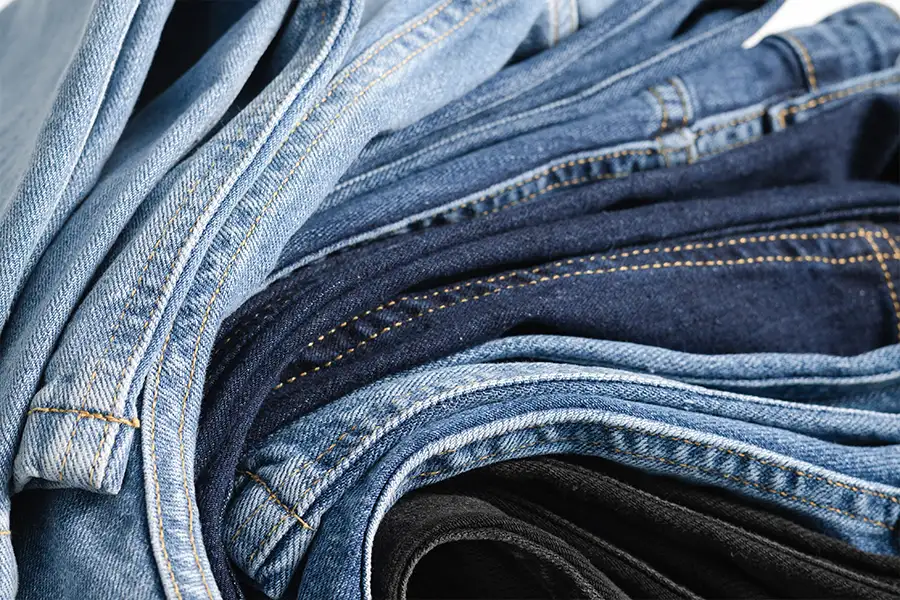
6. 절단, 재봉 & Construction
Cloths are cut either by automated systems or manual methods depending on the order size. A typical pair of jeans includes 20–35 components, each requiring precise alignment to ensure clean shaping.
The sewing stage follows a controlled sequence: 주머니, fly, body assembly, waistband, hemming, and reinforcement. Each module has different tolerances for stitch density, needle type, and tension control.
In our production lines, we separate rigid denim, 스트레치 데님, and heavy-duty workwear so each fabric category runs under its optimal settings. This keeps seams stable, reduces measurement deviation, and ensures consistent handling regardless of the wash or style.
7. 세탁, Distressing & 마무리 손질
Washing defines the aesthetic of jeans—from enzyme washes and stone effects to laser whiskers and eco-friendly ozone processes. Every recipe must balance color removal, handfeel, and fabric integrity. Small shifts in temperature, chemical concentration, or load size can change the shade.
To control this, we run pilot washes for each style and lock down detailed formulas before bulk production. Shade panels are checked daily, ensuring the final result stays consistent across thousands of units
8. 품질 검사 & Measurement Control
Quality checkpoints start before sewing and continue through inline stitching, post-wash inspection, and final measurement confirmation. Inspectors review stitch balance, bartacks, hardware strength, and all critical measurements against the spec sheet.
Our team maintains detailed measurement logs throughout production, allowing us to catch drifts early and fix them before they scale. This reduces rework and keeps size consistency stable between different batches or reorders.
9. 포장, 선적 서류 비치 & Shipping Coordination
Finally, jeans are trimmed, 태그, folded, and packed. Export documents are prepared, and goods are shipped by sea, air, or rail depending on the delivery plan.
Troubleshooting in Denim Jeans Manufacturing
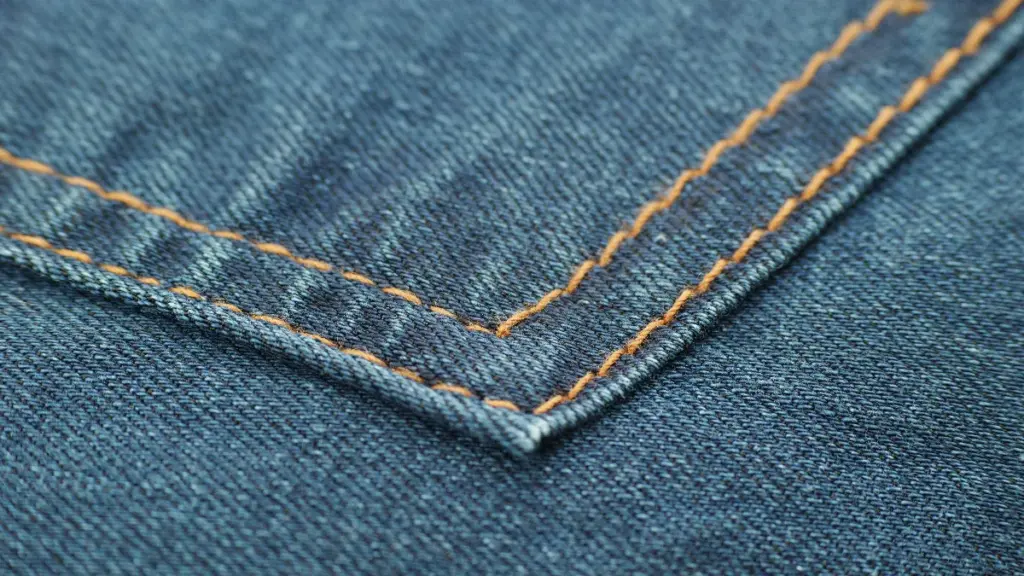
Maintaining consistent denim quality demands early issue detection and targeted technical corrections. OEM and ODM buyers, technical designers, and factory engineers managing any batch size should prioritize 4 core problem areas to safeguard product standards, protect delivery timelines, and prevent costly rework. Rapid resolution strengthens brand credibility and keeps production running smoothly.
Sewing Defects and Remedies
Frequent sewing faults include broken stitches from needle damage or friction, skipped stitches from timing misalignment, and ragged seams. Stretch denim often produces wavy seams and ropy hems that undermine finish quality. The solution is to match thread type and size precisely to fabric weight, maintain balanced stitch tension, replace needles before visible wear, and carry out scheduled machine maintenance with ongoing operator training. These measures secure stitch integrity and reduce rework across all orders.
Fabric Quality Control Issues
Slubs, holes, 눈물, and uneven dye patterns often originate during weaving or dyeing, compromising durability and appearance. Effective facilities run strict inspections at these stages and reject any rolls failing visual or tensile checks. This process ensures only defect-free fabric reaches assembly, cutting warranty claims and protecting production schedules.
Chemical Processing Hazards and Mitigation
Potassium permanganate, sodium metabisulphite, and similar agents can degrade fiber strength and endanger workers if handled poorly. Leading facilities vet chemical compatibility, control water temperature and pH, and ensure complete residue removal during rinse and dry cycles. Enforcing ventilation and protective gear safeguards staff and prevents contamination, keeping finished goods shipment-ready.
Production Bottlenecks and Solutions
Material delays and capacity gaps stall denim production, risking missed deadlines. Integrating procurement with production planning secures a steady supply aligned to forecasts, while scalable machinery and optimized layouts absorb demand spikes without quality loss. 브랜드를 위해, these steps deliver faster lead times, dependable inventory, and greater market agility.
Ready to Custom Denim Jeans?
Changhong offers fully integrated denim manufacturing—from custom fabric development to washed final garments. We support:
- Low MOQs for new brands
- High-volume consistency for established labels
- Advanced washing and finishing technologies
- Mature quality-control systems
- On-time delivery backed by a controlled production schedule
Frequently Asked Questions About Denim Production
What Are the Key Denim Production Stages?
Plan each batch around cotton sourcing, yarn spinning, indigo dyeing, weaving, fabric finishing, 절단, 재봉, inspection, 그리고 포장. Skipping or rushing any stage will cause inconsistent fabric feel or weak seams. Equip each stage with the right machines and trained operators to avoid bottlenecks and maintain fabric quality from loom to shipment, safeguarding brand reputation in every market.
How Long Does Denim Manufacturing Take?
Lead times vary with order volume, customization, and wash complexity. Prototypes or small runs clear the floor in several weeks, while full production with multiple finishes can take 1–2 months. Always build extra time for sample approval—locking in wash results and fit early prevents downstream delays and costly airfreight from last-minute changes.
What Machines Are Used in Denim Production?
Ring-spinning machines handle yarn creation, shuttle or projectile looms weave the denim, and heavy-duty sewing machines assemble pieces. Modern finishing uses washing units for effects from stone wash to eco-friendly enzyme treatments. CAD cutters and laser detailing systems increase precision, shorten cut-to-sew time, and reduce fabric waste while meeting the tight tolerances premium buyers demand.
How Do Manufacturers Ensure Consistent Quality?
Inspect fabric rolls before cutting, run in-line checks during sewing, and conduct post-production tests to catch defects early and avoid rework. Factories with ISO9001 and BSCI certifications uphold strict process controls and social compliance. Combined with continuous staff training, these systems keep defect rates low even as production scales.
How Can Waste Be Reduced in Denim Manufacturing?
Apply optimized cutting markers, recycle offcuts, and choose water-efficient washing cycles to reduce scrap, lower material costs, and comply with strict environmental regulations. Adopting sustainable fibers and lower-impact dyes strengthens positioning in eco-conscious markets, and securing certifications verifies sustainability claims without compromising fabric performance.

